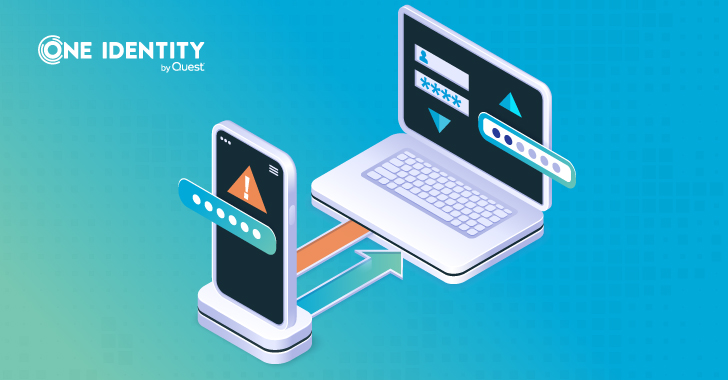
Deploying advanced authentication measures is key to helping organizations address the weakest link in network security: human users. Implementing some form of two-factor authentication is a great start, but many organizations may not have reached this point yet or do not have the authentication sophistication required to adequately protect their organization’s profile. Organizations can make mistakes when deploying advanced authentication measures, so it’s critical to understand these potential pitfalls.
1. Failure to carry out risk assessment
A comprehensive risk assessment is an important first step in any identity verification implementation. An organization is at risk if it cannot assess current threats and vulnerabilities, systems and processes, or the level of protection required for different applications and data.
Not all applications require the same level of security. For example, applications that handle sensitive customer or financial information may require stronger authentication measures than less critical systems. Without risk assessment, organizations cannot effectively classify and prioritize content that requires additional authentication.
Therefore, it is necessary Improve organizational security with advanced authentication.
The bottom line is that not all users need access to all applications or data. For example, marketing users do not need to access sensitive HR data. By evaluating roles as part of a risk assessment, organizations can look to implement role-based access controls (RBAC) to ensure that users in specific roles only have access to the data and applications they need to complete their jobs.
2. Failure to complete due diligence to integrate authentication with current systems
Considering compatibility with existing systems, especially legacy systems, is critical to ensuring a cohesive authentication framework across your infrastructure. Adhering to industry-standard authentication methods is critical. This may involve recoding the application front-end to adopt OIDC (OpenID Connect) or SAML (Security Assertion Markup Language) processes. Many vendors offer toolkits that simplify this process to help ensure seamless integration.
Performing due diligence to ensure your system has integration options with your authentication system can help reduce implementation complexity and enhance overall security.
3. Only one authentication factor is required
In today’s security environment, requiring at least two authentication factors is imperative. A range of suggested additional factors include:
- Physical tokens: Devices such as Yubikey or Google Titan tokens generate digital signatures, providing another layer of identity security
- Biometric authentication: factors such as fingerprint or facial recognition
- Trusted devices: Device registration or the presence of an issued and verified certificate ensures that users we know are using a trusted device and have access to the systems they need
- High trust factors such as bank ID or government electronic ID
Consider data sensitivity when choosing authentication factors. For highly sensitive information, a combination of factors can provide a higher level of security. However, access to less sensitive data can be granted with just a password and a time-based one-time password (TOTP) authenticator app code or push notification.
Another option worth exploring is passwordless authentication. Instead of using a password, this option leverages other verification factors such as biometrics, a trusted device, or a physical token to grant access.
Relying on one factor of authentication is not enough to effectively combat the ever-changing threats organizations face.
4. Forget about user experience
Users will become frustrated if their authentication process is too clunky and cumbersome. Balancing security and accessibility is critical to a positive user experience. When considering advanced authentication factors, prioritize solutions that minimize steps and reduce friction. Clear instructions, user-friendly interface and self-service options enhance the user experience.
5. Not paying attention to authentication activities and patterns
Without regular reviews or a deep understanding of user behavior, organizations cannot effectively assess or mitigate risk. Regular monitoring and analysis of authentication activity is critical to ensuring ongoing security.
While most identity and access management (IAM) platforms provide logging data and dashboards, real-time alerts on suspicious or anomalous behavior through SIEM integration enable organizations to quickly identify threats and take action. These alerts notify administrators and security teams of unauthorized access attempts through unusual login patterns.
Some organizations implement risk-based authentication, using machine learning to develop profiles of past login behavior and adapting security measures to instantly verify a user’s identity. Login attempts with a higher risk score will require additional authentication factors or be denied access entirely, while lower-risk logins will prompt fewer requirements or bypass authentication entirely.
6. Neglecting user training and education
Training users is critical to enhancing overall security. Otherwise, users may engage in risky behavior, leaving the organization in a more vulnerable position.
Effective end-user training includes providing clear, user-friendly documentation on setting up and using advanced authentication methods. This document should provide step-by-step instructions, screenshots, and troubleshooting tips for easy understanding and registration. Additionally, highlighting real-life examples and case studies of security breaches can increase awareness of the potential consequences.
Promoting a culture of security awareness and vigilance allows organizations to instill a sense of responsibility in users and encourage active participation in identity verification.
By avoiding these mistakes, organizations can significantly strengthen their security posture, reduce the risk of unauthorized access or data exfiltration, and further protect valuable company assets.
